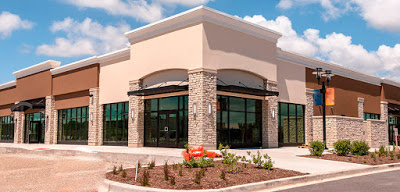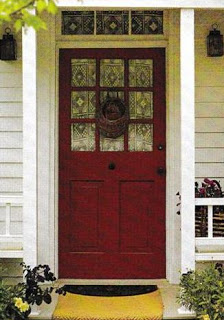Exterior Colors
Much like interior painting, when exterior painting it is best to think in terms of sets of colors rather than solitary colors. However the activity is often more difficult because houses are often built of several materials that have different textures, such as hardwood siding matched with a natural stone foundation or a brick building with real wood trim. If you want to emphasize the difference in textures, paint each element another color.
The Picture as a Whole
When picking colors, note that two colors that could work well jointly as a siding and trim combo, may clash with the roof color or some other elements such as the deck or landscaping. So when picking colors, remember to factor in things you can’t, or won’t change, such as the roof covering material, the nearby landscape and plantings, any masonry work, and the color of your neighborhood friends’ houses.
Local Customs
When choosing a house color, consider the local customs in your town. It is ever more common for towns and communities to insist on some control over house colors. For example, in the holiday resort community of Hilton Head, South Carolina, residents must choose exterior colors from a limited palette of muted shades and even the stop signs have color limitations, whereas in the location of Charleston, there is a well-known district of pastel-colored houses called “Rainbow Row” where daring colors are welcome. Some planned communities can even fine you or make you repaint your home unless you use one of the accepted paint colors.
Testing Different Color Strategies
As with the interior color selection process, you could start choosing color positioning without actually painting anything. Trace or sketch an outline drawing of your residence and then make several photocopies to try different layouts. Use a pencil or highlighter and color your home’s features and experiment with several high-lighting alternatives. Determine which features you want to emphasize and which ones you would like to hide. The goal here is to create a well balanced whole where no aspect seems to dominate. By “pre-painting” in this manner you won’t only avoid any disappointments you’ll be inspired to try some distinctive schemes before you pick up the paintbrush.
Some paint stores have computers that will “paint” your home for you right on the computer screen. The better systems are equipped to scan a high-quality picture of your house. Or you can provide a high quality digital image. Even if you cannot get an exact reproduction of your property, these programs will provide you with a sense of what types or combinations are pleasing and demonstrate some ideas of how you may paint.
Now that you have selected the colors for your home it’s time to decide which colors should be assigned to specific architectural elements. Generally the siding is done in a single color, but if there is ornamental molding above the first floor, another color siding can be very interesting. Casings around windows and doors should all be the same color or the house will seem too busy. If there are ornamental highlights in your trimming and molding, several colors are fine if the pattern repeats on the whole house. Some Victorian homes can look healthy with six colors, so there is no firm rule.
One common fashion is to paint the window sash and trim a color that is lighter than the body of the structure. Shutters, if present, are usually painted darker than the home body. Obviously, fashions change. For example, at the turn of the century, gloss black was the most popular choice for the windows sash. Nevertheless, you almost never see gloss dark paint today except on shutters.
Highlight ornate trim work, below left, with eye catching colors.
Below are a Couple Tips for other Architectural Highlights:
Front Entry
Create a stunning effect with the addition of an accent color to this important element of your home. For example, a white house with a door decorated a bright color, such as red or green, pulls attention to the entranceway making the access seem more inviting.
Frieze
A historically appropriate treatment for the frieze is by using both the trim and body colors. Let the trim color to be the dominating one to draw a clear difference from the top of the siding. Take care not to introduce too many colors; you may end up with an impact that is way too busy.
Brackets (Corner)
Brackets need to be regarded as a component of the overall structure and should be painted in order to not appear that they are “floating free” of the framework. Use the principle trim color. Avoid using too much color. Some painters add a leading edge of scarlet to these features.
Brackets (Sandwich)
Sandwich brackets are a little different. Because they consist of several layers and are more complex than simple corner brackets, it is more suitable to use several colors. Paint the exterior parts to complement the trim and frieze, and the center another color to show off your scroll work.
Support Columns
When you have simple rectangular wooden posts on the porch, you probably don’t want to emphasize them with their own color. Paint them to complement either the entire trim or body coloring of your structure. However, if your posts have special millwork, such as a chamfer on the square post or a band on the turned post, it is quite acceptable to showcase these designs with a flourish.
Many people prefer to paint porch ceilings sky blue because they say the color mimics nature. White columns add a nice contrasting touch.
Rails
The rails are essentially extensions of the posts. Therefore, they are usually colored in the same color as the posts.
Verticle Railing Supports
Try painting the balusters a lighter color than the rails. When the posts and rails have been treated in the primary body color, try to use the trim colors to make sure they stand out. Even though you have elaborately worked balusters, don’t use way too many colors to demonstrate your handiwork. Aside from the timeframe that would be involved in detailing each baluster, the effect will look too busy.
Ceilings and Floor
Porches are painted certain colors not only for beautification, but as concerns of practicality. Light colored ceilings help maintain a sense of airiness and brightness. Painting porch ceilings blue is a technique that has been used for centuries to suggest the sky overhead. It is rumored to keep nesting insects, such as hornets, from settling in. When the undersides of your porch ceiling rafters are uncovered, you might paint them by utilizing a combination of the body and trim colors. A dark floor is even more functional since it shows dirt and tracks less readily than a floor painted in a lighter color.
Steps and Risers
The risers of wooden steps are usually painted the trim color, as the treads carry a surface (porch or deck) to the bottom and should be painted in the same color. The handrail and balusters on the steps should be colored to complement the porch rail and baluster color design.
Cement Foundations
Many properties have a ring of brick or concrete blocks below the siding. While it is fine to have this band the same color as the siding, a darker color makes the home seem securely planted and can hide dirt. Basement windows are generally decorated the same dark color to de-emphasize them.
A bright accent color, below left draws attention to this door.
Expert’s Tips:
There are many online paint planning programs. Leading paint manufacturers such as Benjamin Moore (www.benjaminmoore.com), Valspar (www.valsparatlowes.com), Glidden (www.glidden.com), and Sherwin Williams (www.sherwin-williams.com) feature paint color planners online. Simply search “virtual paint color planner” on the Internet for a list.
A terrific way to look at how colors interact is to see them in fabrics. Fabrics tend to be created by people who study color and also have worked with it for a long period. The microcosm of a couch and pillow combination in a popular catalog may contain the color plan that will make your home look spectacular
Prefab Color Layouts
Deciding on the specific colors in a multicolor scheme is a little tricky. It is the reason that almost all of the major paint companies have created “combo cards” to help you to pick body, trim, and accent colors in one step. These colors are also available in historic shades designed to match the most widespread color schemes of certain periods. One nice feature of these cards would be that the trim and accent color chips often overlap the body color, which helps demonstrate a more realistic relationship.
Sound Quality Painting
824 90th Dr SE suite B
Lake Stevens WA 98258
(425) 512-7400
https://sites.google.com/1upserve.com/painter-lake-stevens
From https://homepainter0.blogspot.com/2021/03/choosing-exterior-color-schemes.html


